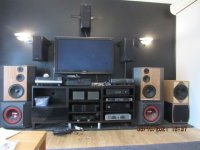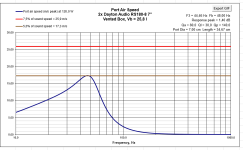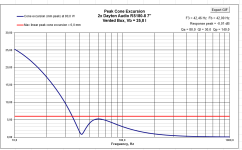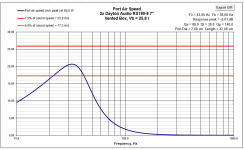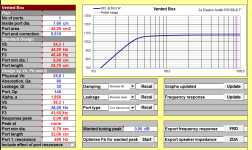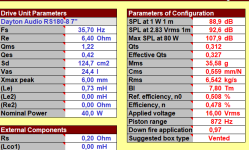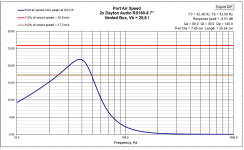Any yet these were my last build for my own use, clever cabinet construction with a huge 45 degree cutaway to each side and they image very well, it can be done; although this was for WAF purposes it still worked. A decade old now.
Modular works; especially with multi amping and digital XOs, big bass box and taller and/or narrower box on top is a good compromise
Modular works; especially with multi amping and digital XOs, big bass box and taller and/or narrower box on top is a good compromise
Attachments
Your cut aways are going to cut down massively on direct reflection. Making use of a bigger baffle without all of the reflections going directly forward towards the listener giving that very "it's coming from the speaker" sound associated with big baffles. I went the extreme opposite I have baffleless open baffle speakers. You also offset the drivers which will break up any peaks associated with the symmetric big baffles.
No need to apologise, real life gets always in the middle...I apologize for my late response. I completely remodeled the enclosure and splitted it into two separate chambers. One following the recommendation of around 20 liters which I surpassed to almost 26 liters and the second one for the tweeter which is sealed into own enclosure so it does not matter how big it is. I also decided to round up the edges of the baffle by 0.5 inches. The parameters are 52x23x40cm HxWxD while woofers's chamber is 40.2x23x40cm HxWxD. The woofers are kept centered in line and the tweeter has 2cm offset. I also recalculated all the parameters and went with 48hz Fb with two 7cm ports each 34,7cm long. After that I did all the work on the crossover with crossover point at 2200hz and managed quite "good" both on-axis and off-axis frequency response. What do you think?
I do not know that excel sheet but I checked the air speed in VCAD2 and the value is well below the turbulence warning, even with one vent only.
This is a 20L cabinet tuned at 48Hz (D=7.6cm L=23.2cm).
This is a 26L box tuned at 48Hz calculated for your baffle 23x52cm (brown line).
Don't use maximum spec input wattage in your box models. Use what gets you to approximately the output you require, which should not exceed 100dB. Model for 100dB and your mach will be lower and more feasible.
I plan to use the speaker with 200W 4 ohm amplifier so I set the driver nominal wattage to the RMS of the driver. If I lowered it to 30W for each driver, I would only need one port and manage to get Fb of 43hz and F3 of 43hz as well and huge exceed of 17,3m/s air speed. It isn't much of a difference apart from using 2 ports and 48hz tuning at 60W. What's the point of doing this? Isn't it worth to account if I turned it to max even though it's highly unlikely?
Before considering air speed you should consider the maximum cone excursion.
At 60W you get an spl of 106dB, the cone xmax is reached at 35Hz and is higher below that frequency.
The air speed is 17.3 m/s and you reach the turbulence warning but I doubt you can hear it with that sound level.
One vent is enough and, being shorter than two, is easier to fit in the cabinet.


At 60W you get an spl of 106dB, the cone xmax is reached at 35Hz and is higher below that frequency.
The air speed is 17.3 m/s and you reach the turbulence warning but I doubt you can hear it with that sound level.
One vent is enough and, being shorter than two, is easier to fit in the cabinet.
So generaly it's better not to look at maximum SPL and rather look at reproduction at lower levels? At this point is it worth it for me to rework my design once again and rather limit the woofer's wattage to around 30-40W and gain lower Fb and the need for just one port than just stick with the design I did earlier?
I quickly opened Unibox and tried lowering the wattage of each woofer to 40W. Setting the Fb to 42 and 38hz, is this better than in my design? Also do I have to limit the wattage of the amplifier or could it be done in crossover via resistors?
Attachments
Last edited:
- Home
- Loudspeakers
- Multi-Way
- Building my first 2.5 way speaker
